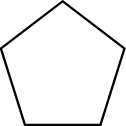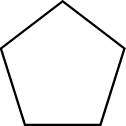| << Chapter < Page | Chapter >> Page > |
7.1 How many rows of six tiles each will he have when he has finished?
7.2 Draw a diagram to show what it looks like.
8.
8.2 Make a diagram to show what it would look like.
9. Dad uses 736 tiles to tile a rectangular stoep. There are 23 tiles across the width of the stoep. How many tiles are there down the length of this stoep? Write down your calculation and answer.
10. Little 1 cm square tiles that look like Tiger’s eye semi-precious stones are used to cover a work surface in the kitchen. There are 75 of these tiles along the length of this surface, and 54 tiles across its width. How many tiles are there altogether?
Activity 2:
To investigate and extend numeric and geometric patterns not limited to sequences involving constant difference or ratio [LO 2.1]
1.1

1.2


1.3



1.4
1. Look at the following shapes (which can be made with cuisenaire rods or toothpicks) and write down your answers:
There is a very obvious pattern. Predict what 1.4 will be.
That pattern is so easy because each time the pattern changes in the same way.
Spotting a pattern can save us time and energy when we calculate answers.
2. Now look at the multiples of 9 again. We have already noticed one pattern. Maybe you noticed another? 9; 18; 27; 36; …..
Add the digits that make each multiple: 0 + 9 =____; 1 + 8 =____; 2 + 7 =____; 3 + 6 = ____
Is this true of all the multiples of 9? Try a few more. It can be useful if you are not sure of a multiple. Some learners are not sure if 54 or 56 is a multiple of 9. Which is it? ____
John knows seventy something is a multiple of 9. Help him: seventy-___ All John has to do is to say: 7 + ___ = 9; the multiple is 72.
3. Complete the table by discovering and using the pattern:
3.1
| Input | 1 | 2 | 3 | 4 | 5 | 6 | 7 | 10 | 13 |
| Output | 7 | 14 | 21 | 28 |
3.2 This information could also be given in a flow diagram. Please complete the flow diagram by looking at 4.1 again:

3.3 Write in words what was done: The input number was____________
4.
4.1 Complete the table and then describe to your friends what was done:
| 1 | 2 | 3 | 4 | 7 | 8 | 9 | 10 | 20 | 50 |
| 7 | 12 | 17 | 22 |
4.2 Put the same information from 5.1 in a flow diagram:

4.3 Write down in words what was done: The input number was ______
5.
5.1 Now find the “recipe” and complete this table:
| 1 | 2 | 3 | 4 | 5 | 6 | 9 | 11 | 12 | 20 |
| 3 | 5 | 7 | 9 | 11 |
5.3 Now find the “recipe” to complete this table:
| In | 1 | 2 | 3 | 4 | 5 | 6 | 7 | 10 | 14 |
| Out | 3 | 7 | 11 | 15 |
5.5 Why cannot this table in 6.3 be written in a flow diagram? Discuss this with your friends and then write down your answer.
6. Other patterns involving numbers:
6.1 Add: 1 + 2 + 3 + 4 + 5 + 6 + 7 + 8 + 9 + 10
One can just add them in that order, or one can look for patterns. Just as we paired the numbers on opposite sides of the dice, so let us pair opposite numbers here: the first and the last and so on. It becomes:
1 + 10 and 2 + 9 and 3 + 8 and 4 + 7 and 5 + 6. What do you notice about the totals?
_______ This can be shortened to: 5 × 11. Explain this to a friend. Where does 5 × 11 come from?

Notification Switch
Would you like to follow the 'Mathematics grade 4' conversation and receive update notifications?